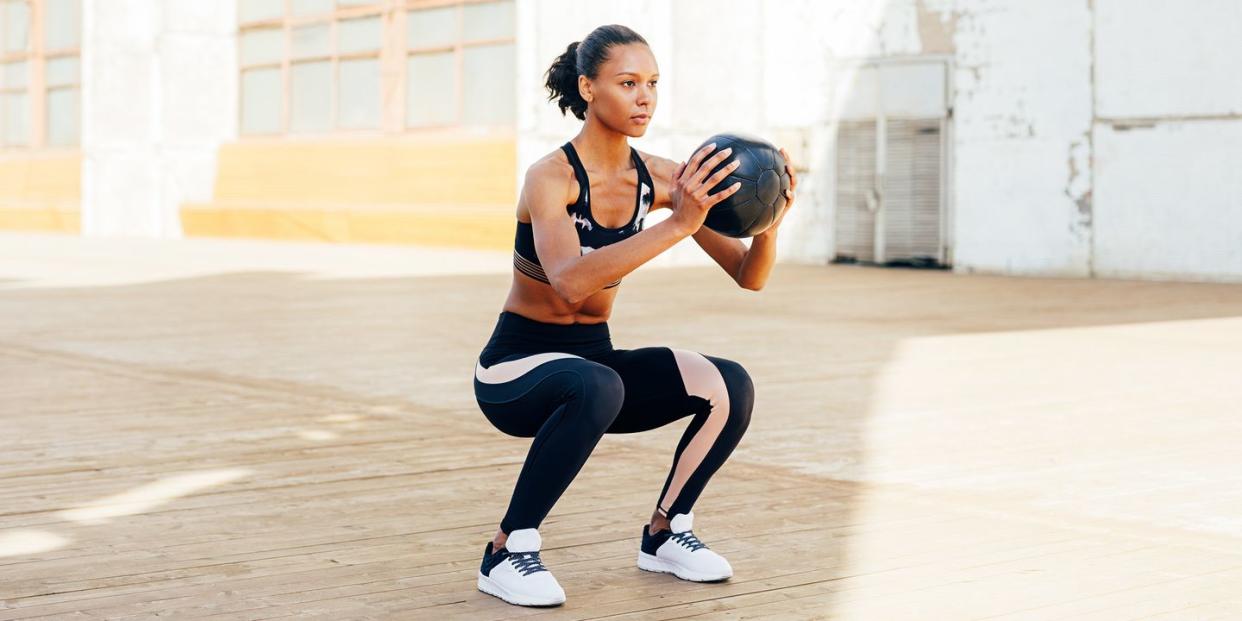Can Someone Please Explain If It Actually Does Anything When You ‘Pulse’ In A Workout Class?

Pulsing—i.e., moving a part of your body up and down in a tiny, repetitive motion—is a staple in barre, cycling, and even yoga classes. It can burn like hell when you're doing it. But have you ever found yourself in this bobbing motion, wondering: Is this doing anything?
Good news: Pulsing is definitely doing something for your body—and it actually comes with some pretty legit benefits.
“When you shorten your range of motion, your muscles are contracted the entire time, versus a full-range exercise, where there is a moment of release,” says Tiffani Robbins, a personal trainer with Obé Fitness and Fithouse in NYC.
Translation: Pulsing isolates the active muscles and fatigues them more quickly, which helps build their endurance. Plus, you’ll get stronger.
“Staying in a pulse brings more blood to them, which can increase growth,” says Robbins.
But don’t nix your full-range moves altogether, since those activate the entire muscle group. In other words, as with most exercises, doing a different variation will score you different benefits. And the ideal is to have a mix of both pulsing moves and full-range versions so that you can experience the best results of both worlds.
For a balanced workout, Robbins suggests pulsing at the end of a move in your routine: For example, complete 10 reps of a squat or lunge, then pulse for 10 counts. Repeat three times.
This article originally appeared in the September 2019 issue of Women's Health.
You Might Also Like